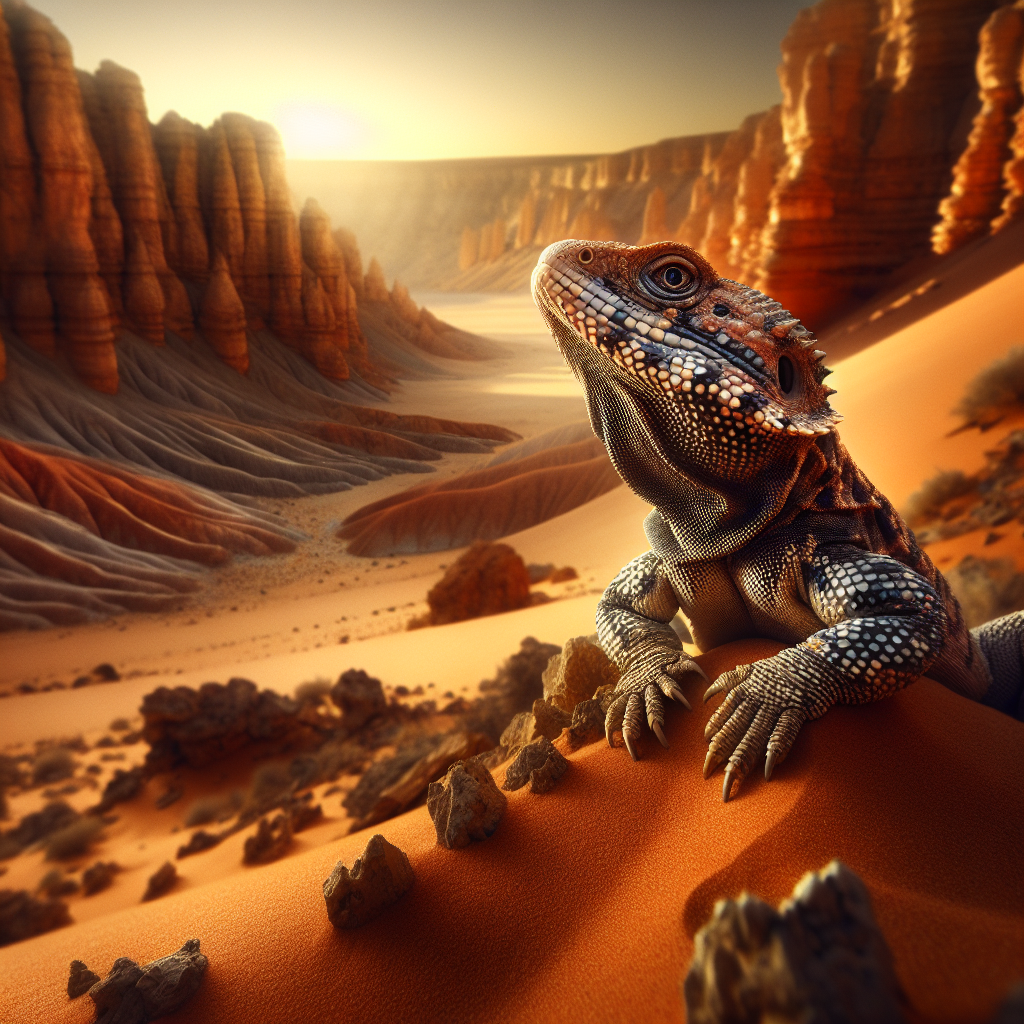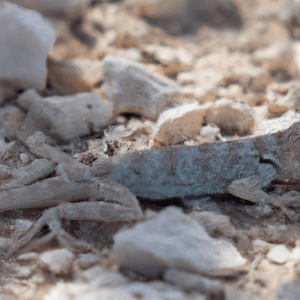Introduction to Desert Lizards’ Climate Adaptations
Have you ever wondered how desert lizards manage to survive in such harsh environments? The adaptations they possess are truly fascinating and essential for their existence in the arid wilderness.
Picture this – a scorching hot desert landscape with little to no water in sight. Desert lizards have evolved over time to overcome these extreme conditions. Their ability to thrive in such environments is a result of remarkable adaptations that have been fine-tuned through generations of evolution.
One interesting fact about desert lizards is the way they regulate their body temperature to cope with the intense heat. Unlike us humans who rely on sweating to cool down, desert lizards have developed specialized mechanisms to prevent water loss and maintain optimal body temperatures in the blazing sun.
These creatures have evolved unique physiological adaptations that allow them to conserve water efficiently. From their skin to their kidneys, every aspect of their physiology is geared towards maximizing water retention in the arid desert environment. It’s like they have their own built-in survival kit for extreme conditions!
But it’s not just their physical attributes that help them survive. Desert lizards also exhibit fascinating behavioral strategies to cope with the challenges of their environment. Whether it’s basking in the sun to absorb heat or seeking shade to avoid overheating, these behaviors are essential for their survival in the harsh desert climate.
So, the next time you spot a desert lizard darting across the sandy terrain, take a moment to appreciate the incredible adaptations that enable these creatures to thrive in one of the most unforgiving environments on Earth. Their resilience and ability to conquer the desert serve as a testament to the wonders of nature’s evolutionary power.
Evolutionary Background of Desert Lizards
So, when it comes to the evolutionary background of desert lizards, it’s like diving into a thrilling adventure story set in the harsh landscapes of arid deserts. Picture this: millions of years ago, these resilient creatures embarked on a remarkable journey of adaptation to survive in some of the most unforgiving environments on Earth.
Let me share an interesting fact with you – did you know that desert lizards have undergone numerous evolutionary changes to thrive in their arid habitats? It’s like they’ve unlocked the secrets of survival through a series of genetic twists and turns over millennia.
Imagine being a desert lizard ancestor, facing the scorching heat and limited resources of the desert. You’d have to evolve some serious skills to make it in that unforgiving terrain. And that’s exactly what these lizards did – they developed specialized traits and behaviors to outsmart their environment and predators.
Now, think about the challenges these desert lizards must have encountered during their evolutionary journey. From adapting to extreme temperature fluctuations to finding innovative ways to conserve water in arid conditions, their survival story is nothing short of awe-inspiring.
As we delve deeper into the evolutionary background of desert lizards, it’s fascinating to consider how their adaptations have not only helped them survive but also shaped their unique characteristics. From their ability to regulate body temperature in scorching heat to their efficient hunting techniques, every aspect of their evolution tells a captivating tale of resilience and ingenuity.
So, the next time you spot a desert lizard basking in the sun or darting across the sand, take a moment to appreciate the incredible journey they’ve been on to become the masters of survival in the desert. Their evolutionary story is a testament to the power of adaptation and the wonders of the natural world.
Physiological Adaptations for Surviving in Arid Environments
So, when it comes to desert lizards and how they survive in such harsh environments, it’s truly fascinating to dive into their physiological adaptations. Picture this – have you ever noticed how these little reptiles seem to be thriving in the scorching heat without breaking a sweat? Well, that’s because they have some pretty incredible mechanisms at play.
Let’s get into the nitty-gritty details. One of the key physiological adaptations that desert lizards have developed is their ability to conserve water like pros. You see, in arid environments where water is scarce, these clever creatures have evolved to minimize water loss from their bodies. They have specialized kidneys that can concentrate their urine, allowing them to extract as much water as possible from the food they eat. It’s like they have their own built-in hydration system!
But wait, there’s more. Desert lizards are also masters of thermoregulation. In simple terms, they know how to regulate their body temperature effectively in extreme heat. They have unique skin structures that help them absorb and retain heat during the day to stay active, and then they can quickly cool down at night to conserve energy. It’s like having a built-in thermostat that adjusts according to the desert’s demanding conditions.
Oh, here’s an interesting fact for you – did you know that some desert lizards can alter their metabolic rates based on the temperature of their surroundings? It’s like they have a smart energy-saving mode that kicks in when needed to ensure their survival in the scorching desert sun.
So, next time you spot a desert lizard basking in the sun, take a moment to appreciate the incredible physiological adaptations that allow these resilient creatures to thrive in some of the harshest environments on Earth. It’s a true testament to the wonders of nature and the remarkable ways in which life has adapted to conquer even the most challenging conditions.
Behavioral Strategies for Coping with Extreme Heat
Have you ever wondered how desert lizards manage to survive in such extreme heat? It’s truly fascinating to explore the behavioral strategies they employ to cope with their scorching environment. From seeking shade during the hottest parts of the day to adjusting their activity patterns, desert lizards have some clever tricks up their scales.
One interesting fact about desert lizards is that they are masters of thermoregulation. Unlike mammals that regulate their body temperature internally, lizards rely on external heat sources to maintain their ideal body temperature. When the desert sun beats down relentlessly, these adaptable creatures can often be spotted basking on rocks or sand to absorb warmth. However, when the heat becomes too intense, they retreat to shade or burrows to prevent overheating.
The behavioral adaptations of desert lizards go beyond just managing heat exposure. These resilient reptiles have also developed unique ways to conserve water in their arid habitats. For instance, some species are known to limit their activity to the cooler hours of the day to reduce water loss through evaporation. By minimizing their movement and conserving energy, desert lizards can survive on limited water resources for extended periods.
Another fascinating aspect of desert lizards’ behavioral adaptations is their ability to regulate their activity levels based on environmental conditions. During the hottest hours, when predators are also less active, desert lizards may reduce their movements to avoid detection and conserve energy. This strategic behavior not only helps them avoid becoming prey but also ensures their survival in the harsh desert environment.
By understanding the behavioral strategies of desert lizards, we gain insights into the incredible adaptability of these creatures and the complex interactions between organisms and their environments. Next time you encounter a desert lizard basking in the sun, take a moment to appreciate the remarkable ways in which they have evolved to thrive in one of the harshest environments on Earth.
Anatomical Features That Aid in Desert Lizards’ Survival
Have you ever stopped to marvel at the unique anatomical features of desert lizards? These fascinating creatures have evolved over time to thrive in some of the harshest environments on the planet. Let’s dive into the world of desert lizards and explore the anatomical adaptations that contribute to their remarkable survival skills.
Desert lizards are true masters of adaptation, and their anatomical features play a crucial role in helping them survive in arid climates. One interesting fact about these lizards is their specialized skin structures that aid in water conservation. Their scales are not just for protection but also help reduce water loss through transpiration, allowing them to retain precious moisture in their bodies.
Imagine encountering a desert lizard and noticing its unique toe pads that enable it to navigate the rugged terrain with ease. These specialized structures provide grip and traction, allowing the lizard to move swiftly over sand dunes and rocky landscapes. It’s like having built-in hiking boots for traversing the desert!
Now, let’s consider the significance of these anatomical adaptations beyond just survival. The intricate design of desert lizards’ bodies showcases the wonders of evolution and the remarkable ways in which living organisms have adapted to their environments over millions of years. Studying these adaptations not only sheds light on the diversity of life on Earth but also underscores the importance of conservation efforts to protect these incredible species.
So, the next time you spot a desert lizard basking in the sun, take a moment to appreciate the intricate details of its anatomy and the incredible adaptations that allow it to thrive in the harsh desert environment. These resilient creatures are a testament to the power of nature’s ingenuity and the beauty of evolutionary diversity.
Impact of Climate Change on Desert Lizards
Imagine looking at a desert landscape and spotting a tiny lizard blending in perfectly with its surroundings. These lizards have mastered the art of camouflage as a key survival strategy in their harsh environment. Did you know that some desert lizards can change their skin color to match the sand or rocks they are resting on? It’s like having an invisibility cloak in the animal kingdom!
Now, picture this: as the climate changes and temperatures rise, desert lizards face new challenges in maintaining their camouflage abilities. With the landscape shifting, how do these creatures adapt and evolve to remain hidden from predators or to hunt effectively? The interplay between their color-changing skills and the altering desert environment is a fascinating area of study.
One practical tip for observing desert lizards in action is to take note of the time of day. These cold-blooded creatures are most active during the early morning or late afternoon when the temperatures are milder. By venturing out at these times, you might catch a glimpse of their intricate camouflage tactics or witness their swift movements as they navigate the desert terrain.
Considering the broader implications, understanding how desert lizards cope with climate change can provide valuable insights into the interconnectedness of species and their habitats. By unraveling the mysteries of their adaptations, researchers can potentially apply this knowledge to conservation efforts aimed at preserving biodiversity in changing environments.
So, the next time you find yourself in the desert, keep an eye out for these masterful camouflagers. Observe their color-changing magic, appreciate their resilience in the face of environmental shifts, and ponder the intricate dance between desert lizards and their ever-changing world. Who knows what other secrets these fascinating creatures hold within their scaly hides?
Role of Camouflage in Desert Lizards’ Adaptations
Have you ever stopped to admire how desert lizards blend seamlessly into their surroundings? It’s like they have a superpower that allows them to disappear in plain sight. This incredible ability to camouflage plays a crucial role in their survival in the harsh desert environment.
Imagine strolling through the sandy dunes of the desert, keeping an eye out for any signs of movement. Suddenly, you spot a lizard perched on a rock, seemingly invisible against the backdrop of sand and rocks. That’s the magic of camouflage in action. Desert lizards have developed specialized coloration and patterns to match their surroundings, allowing them to evade predators and sneak up on unsuspecting prey.
The fascinating thing about camouflage in desert lizards is that it’s not just about blending in visually. These clever creatures also use their body posture and movements to further enhance their camouflage. By staying still or swaying gently in the breeze, they become nearly indistinguishable from the rocks and foliage around them. It’s like watching a living, breathing mirage right before your eyes.
But here’s the kicker – camouflage isn’t just a cool trick for desert lizards. It’s a matter of life and death. In the harsh desert environment where resources are scarce and predators are always on the prowl, being able to hide effectively can mean the difference between survival and becoming someone else’s lunch.
So, the next time you catch a glimpse of a desert lizard effortlessly blending into its surroundings, take a moment to appreciate the evolutionary marvel that is camouflage. It’s nature’s way of showing us that sometimes, the best defense is to simply disappear into the background.
Interactions Between Desert Lizards and their Environment
Have you ever stopped to consider the incredible relationship between desert lizards and their environment? It’s like a fascinating dance of adaptation and survival that has been honed over millennia. Picture this: a scorching desert landscape, the sun beating down mercilessly, and yet, amidst the seemingly barren terrain, these resilient creatures thrive.
One interesting fact that may surprise you is the role of coloration in desert lizards’ adaptations. These reptiles have evolved unique skin pigmentation that helps them blend seamlessly into their surroundings, providing camouflage that protects them from predators and aids in hunting. It’s like they’ve mastered the art of invisibility in the harsh desert environment.
Now, let’s delve a bit deeper into this. Imagine the challenge of trying to spot a desert lizard in the vast expanse of sand and rock. Their ability to blend in with their surroundings is not just a survival tactic but a marvel of nature’s ingenuity. It makes you wonder about the intricate balance between predator and prey, and how these adaptations have shaped the evolutionary path of desert lizards.
On a lighter note, have you ever thought about how a fashion designer might take inspiration from desert lizards‘ coloration for their next collection? Picture a runway show featuring earthy tones and subtle patterns inspired by the natural hues of these creatures. It’s a whimsical thought, but it highlights the beauty and creativity found in the adaptations of desert lizards.
As we unravel the mysteries of desert lizards’ adaptations, we not only gain a deeper appreciation for the wonders of nature but also reflect on our own ability to adapt to challenges in our lives. Just like these resilient reptiles, we too can learn to blend in with our environment, overcome obstacles, and thrive in even the harshest conditions. So, next time you spot a desert lizard basking in the sun, take a moment to marvel at the intricate web of adaptations that make them true survivors in the desert wilderness.
Conservation Efforts to Protect Desert Lizards
Have you ever thought about the incredible diversity of desert lizards and the importance of their conservation efforts? It’s truly fascinating how these unique creatures have adapted to survive in some of the harshest environments on Earth.
Desert lizards play a crucial role in maintaining the delicate balance of their ecosystems. From the spiky Thorny Devil to the speedy Collared Lizard, each species has its own set of adaptations that contribute to the overall biodiversity of the desert landscape.
One interesting fact about conservation efforts for desert lizards is the impact of habitat destruction on their populations. As human activities encroach upon their habitats, these resilient reptiles face increasing challenges to their survival. This raises the question: How can we protect these fascinating creatures and ensure their continued existence in the face of environmental threats?
Conservation efforts for desert lizards involve a multi-faceted approach that includes habitat preservation, research on population dynamics, and community education initiatives. By raising awareness about the importance of these creatures and their adaptations, we can inspire others to join in the conservation efforts and help safeguard the future of desert lizard populations.
It’s crucial to remember that the conservation of desert lizards is not just about protecting one species; it’s about preserving the entire ecosystem they inhabit. These resilient reptiles are indicators of the health of their environment, and by safeguarding their populations, we are also ensuring the well-being of other plants and animals that rely on the desert ecosystem for survival.
So, the next time you spot a desert lizard darting across the arid landscape, take a moment to appreciate the incredible adaptations that allow them to thrive in such challenging conditions. And remember, our actions today can have a lasting impact on the future of these remarkable creatures.
The Resilience of Desert Lizards
Desert lizards are truly fascinating creatures, and their impressive adaptations to the harsh climate are mind-blowing. Imagine this – these little reptiles have developed all sorts of cool tricks to survive in some of the driest and hottest places on Earth.
Let’s dive into the world of desert lizards and explore how their unique anatomical features play a crucial role in their survival. Picture this: when you think of a desert lizard, what’s the first thing that comes to mind? Probably those scaly skin and spiky tails, right? Well, those features are not just for show – they serve a purpose.
One interesting fact about desert lizards is their ability to regulate their body temperature through their specialized skin. Unlike us humans who rely on sweat to cool down, these lizards have skin that helps them absorb heat quickly in the chilly desert nights and release it just as fast when the scorching sun comes up. It’s like having a built-in thermostat!
Now, let’s consider the broader implications of these adaptations. How can studying desert lizards’ anatomical features help us in other areas of research or technology? Just imagine if we could mimic their skin’s properties to create better insulation materials or develop more efficient cooling systems. The possibilities are endless!
So, the next time you see a desert lizard basking in the sun, take a moment to appreciate the incredible adaptations that allow them to thrive in such extreme conditions. Who knew these tiny reptiles could teach us so much about survival and innovation?




